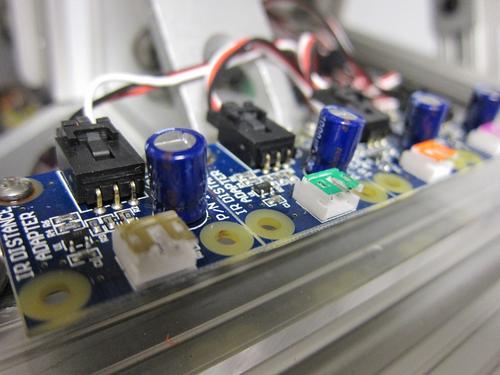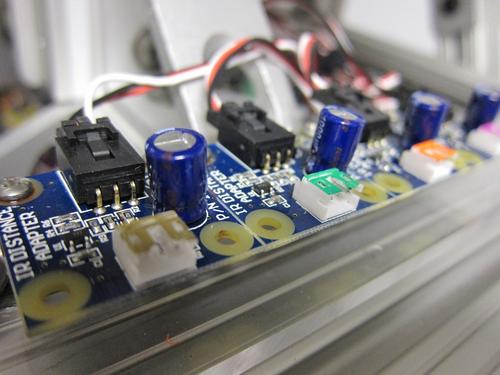Choosing the Right Hardware for Electronics Prototyping
January 29, 2015

When prototyping an electronic product idea, it's important to choose components that will help prove the concept, allow the design to be evaluated and give a basis from which the final product can be derived. There are many options for hardware to use in prototypes, from costly, proprietary and all-in-one packages to low-cost and open-source options.
Different projects have different requirements. And different products might be necessary depending on your goal, but with any selection, established hardware criteria to look for are multilingual support, easy integration and cost-effectiveness.
Factors in Choosing Hardware for Prototyping
Prototyping is an important stage of design, allowing the evaluation of an idea while enabling development of the final implementation. If done well, prototyping will catch issues and allow the design to be optimized for the user before large-scale implementation occurs.

Hardware selection should be based on what enables software development and system integration; allows quick development; facilitates proof of concept; could be used in the final design; and lowers development risks, time, and cost.
Research done by RosenFeld Media shows that in prototyping, the three factors that contribute greatest to what tools and methods design engineers use are:
The time and effort required to produce a working prototype
The ability to create usable prototypes for testing
The price.
Other factors like the ability to create working source code and the learning curve also play design-decision roles, and many designers will have their own requirements as well. The bottom line is a solution must be efficient and effective.
Key Factors in the Design Decision
Time and effort required for developing a working prototype depends heavily on experience and the complexity of the idea being developed. Any hardware will have its own suite of languages and environments it supports, so the ability to prototype quickly relies on your experience with the hardware and its environment. Using development boards requires some electronics know-how to evaluate the shields and to implement them and any peripherals. For designers with coding experience, who haven't used hardware extensively, there exists hardware with considerable language support, which includes an API for C#, C/C++, Java, Python, Visual Basic, Ruby, LabVIEW, Max/MSP, and more.
Ability to create a usable prototype for testing is possible with most hardware options. As hardware gets more popular, more tutorials and example code appear online for designers wanting to get started. As with third-party options, not all code is going to be well written. Look for reliable example code in several languages that suits most products and can easily be adapted for any project. As you go up the cost-scale, there tend to be more toolkits, tutorials, ready-to-run examples, and professional support available for the hardware.
Price plays a key role in what hardware designers choose to use for their prototypes. Arduino offers one of the most cost-effective solutions, with a starter kit for about $100.
However, these factors also should be considered:
Ability to create usable prototype for testing
Cost effectiveness
Low learning curve for people who know coding
Easy to create own GUI widgets and patterns with C#, Visual Basic, LabVIEW, LiveCode, Max/MSP, and other code examples
Full support for Windows, Mac and Linux. Partial support for Android and iOS
Example code for each piece of hardware
Language support for C#, C/C++, Java, Python, Cocoa, Visual Basic, iOS, Android Java, Applescript, AutoIt, Ruby, LabVIEW, MATLAB, Adobe Director, Flash AS3, LiveCode, Max/MSP, Delphi
Phone and email support with an in-house engineer, manuals, tutorials, example code, forums
Considering the Final Implementation
Creating a usable design should be a top priority for designers. More than half of prototypes end up using the same hardware in the final implementation, which means the end-use must be considered. The most obvious consideration is whether the design can be standalone or computer dependent. With development boards and embedded solutions, all of the code can reside on the device, allowing it to standalone. With peripherals, the application code runs on a computer, which must always be connected to the device. Several prototypes have attached such a hardware platform to a Raspberry Pi, which runs the application, allowing for a fairly cost-effective and portable design.
Another consideration is responsiveness. With peripherals, reaction requires a roundtrip through the computer operating system and your application, giving a practically imperceptible lag of 10-30 milliseconds. When the code runs on the microcontroller - assuming the code is well written - lag can be controlled down to mere microseconds. For the most responsive service, some products in the higher price range have real-time performance in the nanoseconds.
The vast majority of systems do not need microsecond-level real-time performance. FAA-certified flight simulators have time constraints that can be easily met by a mid-market solution, and systems from industrial control monitoring systems to data loggers can easily operate on half a second of lag. Even live interactive art has been done without perceptible delay in responsiveness, but some artists may be more choosey. Certain types of medical applications, transportation systems, nuclear plant/reactor monitoring and other mission-critical applications rely more on nanosecond performance.
Keep the final application -- if it needs to be standalone and what level of responsiveness is required -- in mind. While there are many aspects to choosing hardware for the prototype, remember that more than half of prototypes end up using the same hardware in the final implementation, so choosing a solution that can be put into the final product is a huge benefit.
Selecting the Prototyping Solution
Choosing the right hardware for electronics prototyping enables quick development and efficient design. The key factors that will influence the decision are the time and effort required for developing a working prototype, the ability to create a usable prototype for testing, and the price. Many hardware solutions can meet these requirements, but for someone unfamiliar with the language and software provided with the hardware or needing to connect to other resources through the application, alternative and more specialized options exist in the market.
Design engineers and professionals, the West Coast's most important design, innovation, and manufacturing event, Pacific Design & Manufacturing, is taking place in Anaheim, Feb. 10-12, 2015. A Design News event, Pacific Design & Manufacturing is your chance to meet qualified suppliers, get hands-on access to the latest technologies, be informed from a world-class conference program, and expand your network. (You might even meet a Design News editor.) Learn more about Pacific Design & Manufacturing here.
Kat Dornian is Project Outreach Manager for Phidgets Inc., which specializes in making affordable, easy-to-use USB-based sensors and controllers. Phidgets works in many popular programming languages and operating systems.
About the Author(s)
You May Also Like





